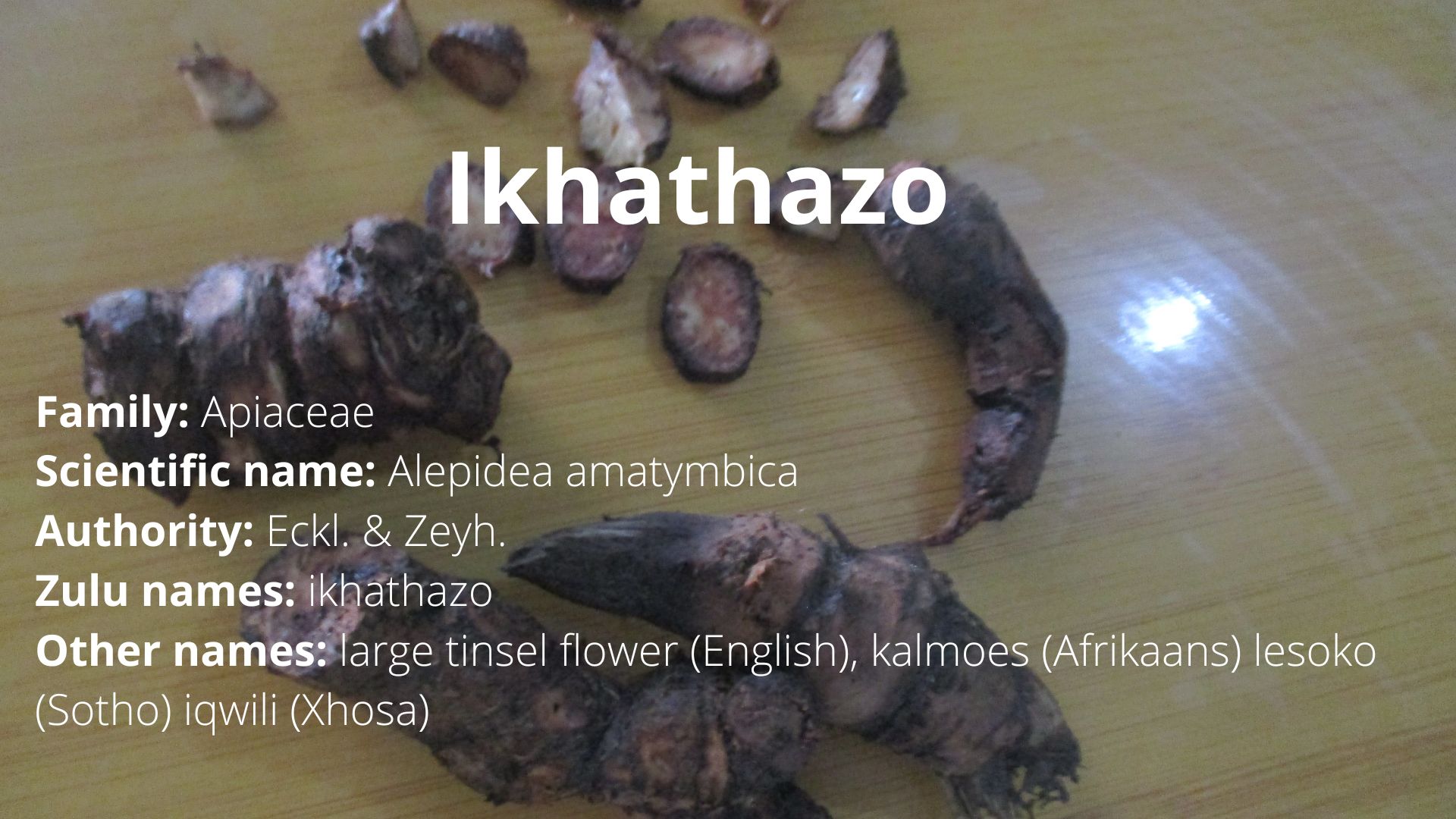Family: Apiaceae
Scientific name: Alepidea amatymbica
Authority: Eckl. & Zeyh.
Zulu name: ikhathazo
Other names: large tinsel flower (English), kalmoes (Afrikaans) lesoko (Sotho) iqwili (Xhosa)
Description: A. amatymbica is an acaulescent perennial herb that is endemic to Africa and can be found growing in the grasslands and near streams. In South Africa, it can be found in the Eastern Cape, Free State, Gauteng, KwaZulu-Natal, Limpopo, and Mpumalanga province. It has rosette radical leaves attenuate at their bases and toothed margins with each tooth protracted into a hair-like trichome, small whitish flowers, ovate mericarps, and aromatic resinous roots.
The high demand for this species has resulted in over-exploitation of the wild population and it is now an endangered species with a protected conservation status.
Uses
- The roots are smoked and used as a mild sedation.
- The roots are smoked and used to encourage vivid dreams.
- The roots are dried, powdered, and taken as a snuff by diviners and healers to assist in divination and communication with ancestors.
- The roots are used to treat respiratory infections, asthma, colds, coughs, fever, influenza, sore throat.
- The roots are used to make an infusion that is taken to treat pain and headache.
- The roots are used to treat rheumatism and inflammation.
- The roots are used to treat abdominal disorders, constipation, diarrhoea, and gastrointestinal complaints.
- The roots are used to treat malaria symptoms.
- The plant is used as a diuretic.
- The roots are used as a purgative.
To buy ikhathazo powder: https://imithiyesintu.co.za/shop/ikhathazo-powder-50g/
References and further reading
- Afolayan, A.J. and Lewu, F.B., 2009. Antimicrobial activity of Alepidea amatymbica. Pharmaceutical biology, 47(5), pp.436-439.
- De Castro, A. and Van Wyk, B.E., 1994. Diagnostic characters and geographic distribution of Alepidea species used in traditional medicine. South African Journal of Botany, 60(6), pp.345-350.
- Hutchings, A., 1989. Observations on plant usage in Xhosa and Zulu medicine. Bothalia, 19(2), pp.225-235.
- Hutchings, A., Scott, A.H., Lewis, G. and Cunningham, A., 1996. Zulu medicinal plants. Natal University Press, Pietermaritzburg.
- Mulaudzi, R.B., Ndhlala, A.R., Finnie, J.F. and Van Staden, J., 2009. Antimicrobial, anti-inflammatory and genotoxicity activity of Alepidea amatymbica and Alepidea natalensis (Apiaceae). South African Journal of Botany, 75(3), pp.584-587.
- Van Wyk, B.E., De Castro, A., Tilney, P.M., Winter, P.J.D. and Magee, A.R., 2008. A new species of Alepidea (Apiaceae, subfam. Saniculoideae). South African Journal of Botany, 74(4), pp.740-745.
- Van Wyk, B.E. and Gericke, N., 2000. People’s plants. A guide to useful plants of southern Africa. Briza Publications, Pretoria.
- Wintola, O.A. and Afolayan, A.J., 2014. Alepidea amatymbica Eckl. & Zeyh.: A review of its traditional uses, phytochemistry, pharmacology, and toxicology. Evidence-Based Complementary and Alternative Medicine, 2014.
